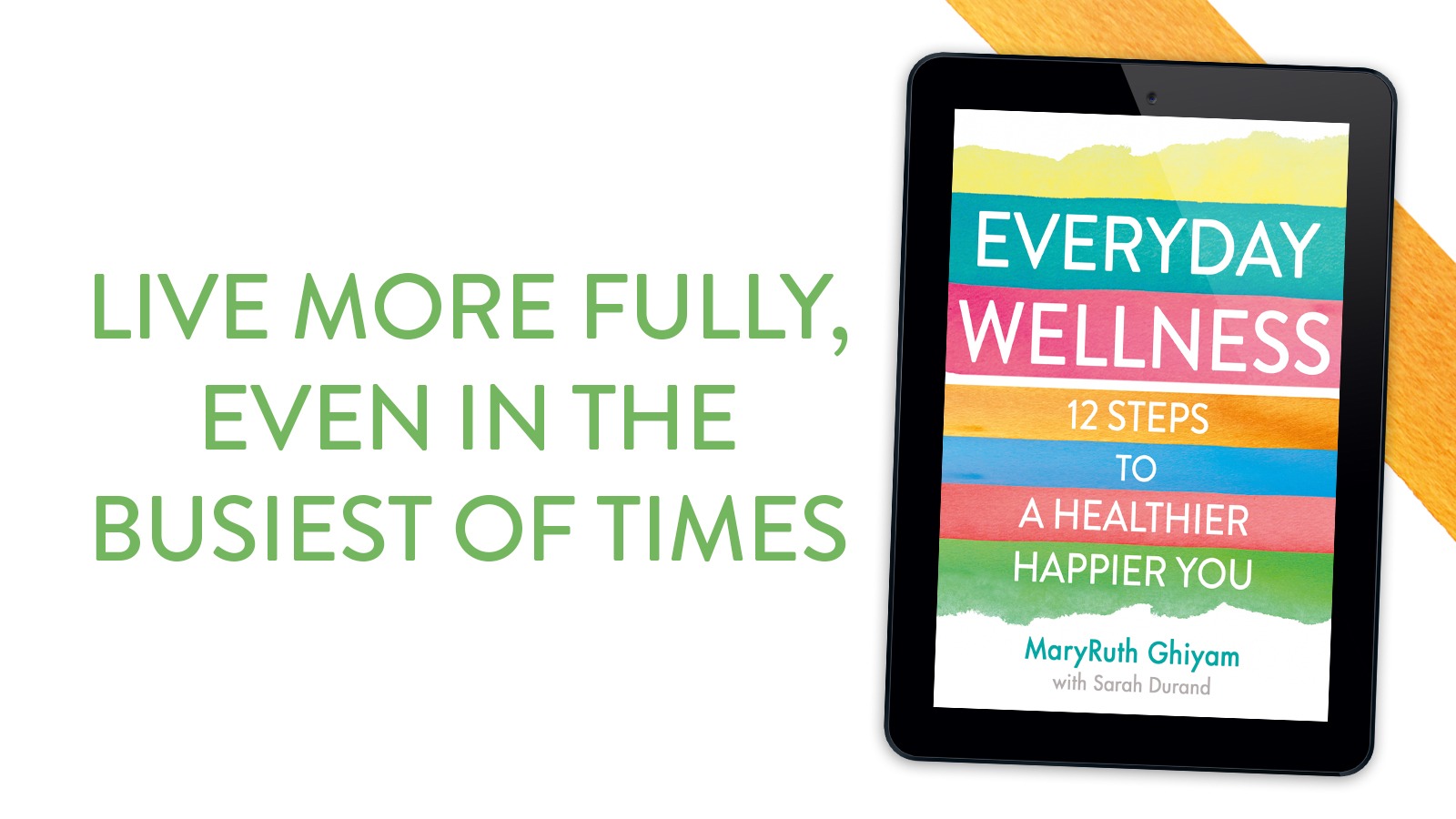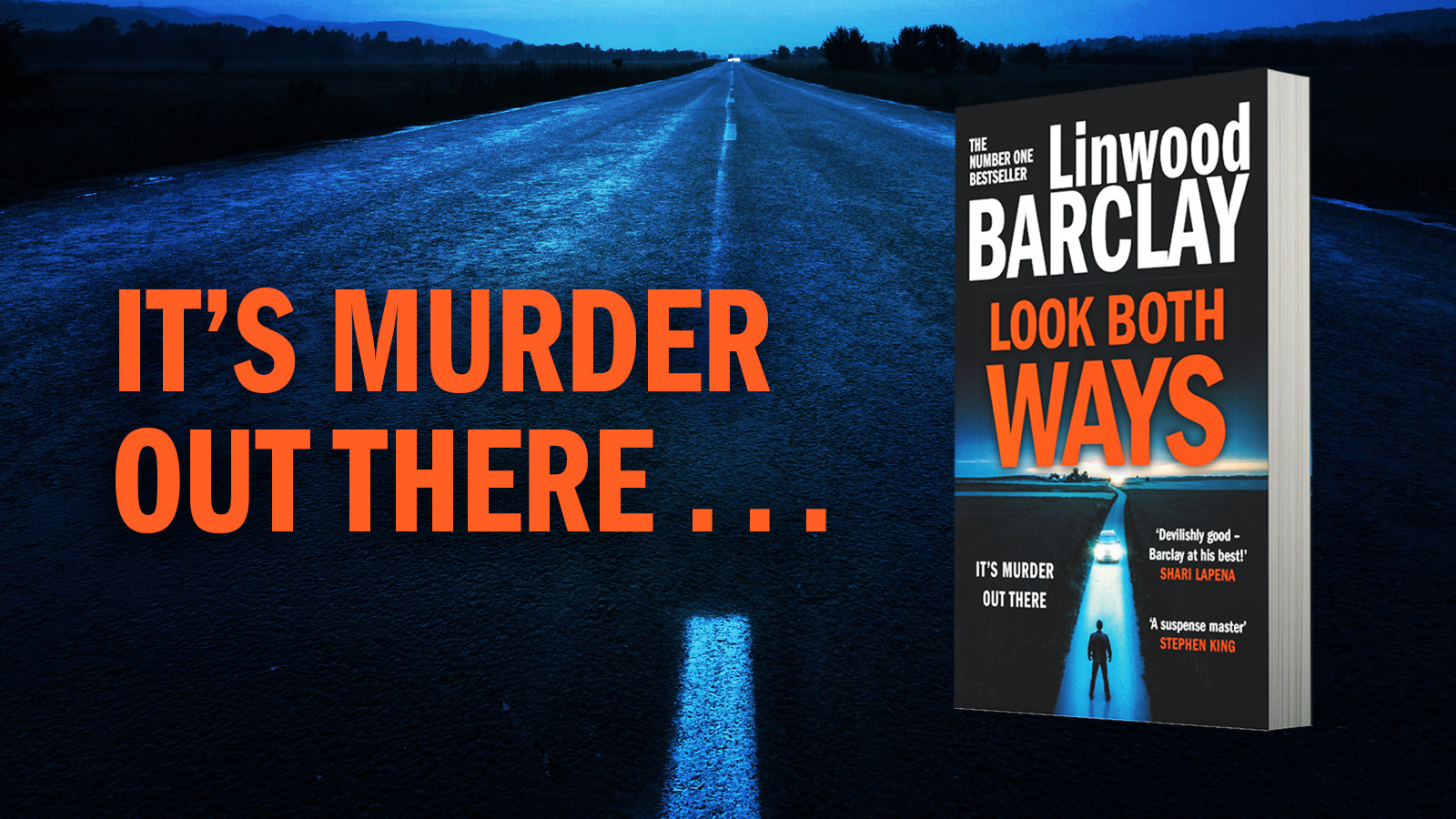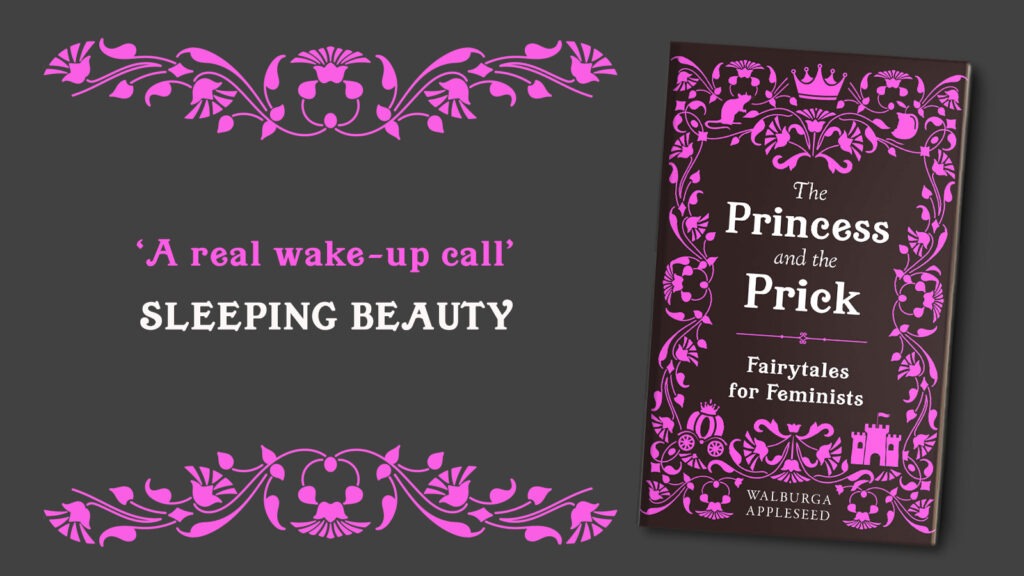Do you want to nourish your body, but don’t have the time, energy or motivation to make the necessary changes? Then it’s time for you to discover Everyday Wellness, the tried and tested method from MaryRuth Ghiyam that will help you to live more fully and constructively, even in the busiest of times.
Continue reading for the introduction!
Moving forward through the chaos and uncertainty that exists in this world can be so challenging. Or your day-to-day might be difficult even when you don’t have any real struggles. You could be about to enter a great new phase in your life, but its fast pace and tricky challenges force you to work hard and develop true self-mastery.
Whether your situation in life is wonderful or awful, it’s easy to feel paralyzed or scared if you don’t have a road map, can’t summon your power, or worry you might fail or fall behind. When you’re faced with a hurdle to clear or a mountain to climb, you might be tempted to crawl into your bed, turn on the TV, and stay there forever. But you can’t. You’re worth more than that. Your life can be so much better than that, so you must get out there and make great things happen.
I have some fantastic news for you. You don’t have to conquer all your challenges in one day. You also don’t have to be rich, have a fancy degree, or have loads of free time to come out on top. To feel happy, accomplished, fulfilled, or like you’re putting good out into the world, all you need are a few daily fundamentals that will help you gain momentum, operate to your highest-functioning degree, and move forward to whatever your goal or purpose is.
It’s all easier than you think. You just need to boil the process of moving forward down to the essentials. The actions that will allow you to dislodge yourself from whatever’s slowing you down or dimming your energy are as basic and straightforward as taking your daily vitamins.
I can show you how.
When I was twelve, my beloved forty-two-year-old dad died suddenly of a heart condition we didn’t know he had. My dad ran our family business and, my whole life, I’d never known a weekday when Richard P. Boehmer hadn’t been pacing around the house scratching notes about work on a yellow legal pad with a red pen. On weekends, he and my mom got up early and loved to play golf together. He was always buzzing, chasing, and dreaming… and then he was gone. Our house was very, very quiet after that.
I’m the classic oldest child—organized, driven, and focused—and my dad always pushed me to hold my chin up, be a leader, and succeed. After he died, I assumed that going to school, making good grades, and getting into the right college would be enough to help me recover. I did all those things on top of helping my mom around the house, nurturing my younger brother, Daniel, and acting as a shining example of strength and courage for my family. I was just putting one foot in front of the other, though, not thriving. To top it off, I was crushed by grief.
When I was twenty, I came home from college for Easter break and was in my bedroom when I heard my mom screaming at the top of her lungs. I ran out of my room and saw her in my seventeen-year-old brother’s bedroom, standing above his motionless body on the bed. Then I watched her drag him to the floor and start to give him CPR. But it was too late. He was dead, clutching a phone he’d been trying to use to call for help. We didn’t know it, but Daniel had developed a heart condition called hypertrophic cardiomyopathy. Suddenly, the hole in my chest that I thought the passage of time had helped heal opened up again, and now the wound was even bigger. My brother had been my best friend. Daniel came to all my basketball games in high school. He made me countless playlists of the best songs to listen to, and he made me laugh about everything, especially during our summer vacations on the Jersey Shore or at Lake Nebo in Upstate New York.
I knew I had to keep going, though, so I went back to college soon after the funeral and worked as hard as I could to prepare for my final exams. I studied abroad in Italy that summer, and when I got back to school, I focused on graduating on time with the rest of my class. If I could succeed, wasn’t I living my best life?
Just over a year later, my mom went to the doctor to talk about the right-side facial spasms she’d been having, and she left with a diagnosis of two brain tumors. When she told me, I went numb. My entire family is going to die, I thought. I’m twenty-one, and I’m going to be the last one left. I didn’t feel cursed or unlucky; my pain was physical, like a two-ton weight was sitting on my chest.
My mom endured one painful craniotomy surgery followed by another seventeen months later. Luckily, doctors determined that both brain tumors were benign, but the part of her brain that controls motor function had been damaged during the second operation, and she became partially paralyzed on her right side. During her long months of rehabilitation, I drove home on the weekends to help take care of her. It wasn’t always easy but being present for my mom taught me I had a greater purpose: I wanted to help people live healthier, more fulfilling lives.
I went back to school and earned certifications as a health educator and professional business coach. I loved being a student again and I dove into research, soaking up everything I could about health, healing, and the human body. The benefits of healthy food, exercise, alternative therapies, and fasting fascinated me; the interconnectivity of negative emotions and chronic pain opened my mind and showed me things I’d never thought of. I applied all this knowledge—and so much more—to nursing my mom back from her paralysis and into “normal” life. It was the best unpaid job I could imagine, and waking up in the morning knowing I could make a difference for someone I loved was thrilling.
Life was moving forward, and my mom was getting better. We 100 percent believed the worst was behind us and that nothing as bad could happen to us again. Then, in late 2008, Lehman Brothers crumbled, the housing market collapsed, and the Great Recession exploded like an atom bomb. Our family’s lumber business plummeted and, over the course of the next two years, my mom had to shut down five locations and lay off 250 employees. She sold our house at a 50 percent loss, borrowed money from friends and family, and started living off credit cards. Within a few years, she was a whopping $700,000 in debt. It was technically her debt, not mine, but we were family, and we were sticking together through thick and thin.
If you’ve carried significant personal debt, you know how hopeless it can feel. I carried around the weight of that debt in my bones, and every day I woke up tired. But then I jumped out of bed with a smile on my face, went to my job as a Manhattan real estate agent working with my mom, made good money, and surpassed all my company’s earning benchmarks. After writing our rent check and buying groceries, we gave every last cent of our paychecks to the debt-management program my mom and I had enrolled in. Then I went back to work trying to sell more, network more, and earn more. I felt like Sisyphus, pushing a boulder up a mountain all day long only to have it fall back on top of me when the sun went down. Sure, I was putting one foot in front of the other, but I was getting nowhere. I liked my job, but I didn’t love it. And without real fulfillment, I knew my mom and
This is it, I told myself. I’ve had it rough for a lot of years, but this is rock bottom. Time to move forward.
I put my neck on the line, quit my job, and bought an ad on Facebook that offered free fifty-minute nutritional consultations. I’d developed a simple, free, complete system to help people lose weight, overcome pain, develop better energy, and improve overall health, and my plan was to prescribe it to my future clients, then get them to sign up for a three- to six-month program. I knew I had the tools, advice, and program to help people heal physically, spiritually, and emotionally, and I was more than ready to share them. When my ad went live, I moved my office into a small space in Midtown Manhattan on 47th and Third, waited for the phone to ring, and began doing consultations.
Things were really tough at first. I worked from 9 a.m. till 11 p.m. every day and didn’t pay the rent on my apartment for five months. In 2013, I got married on a shoestring, and a few months later I had a miscarriage while I was at work waiting for a client. I still met with them because I was terrified that if I canceled their session, I’d lose the $250 we desperately needed to buy groceries that week. Slowly, day by day, I moved forward, and life started to get better as I chipped away at our debt. Within a year I had eighty to a hundred private clients and was signing up about twenty new ones a month. Best of all, I was happier thanI’d been in years. I texted my clients all day long, not just because I wanted to check up on them, but because I truly, deeply cared about them.
My clients were successful individuals who came from the fields of finance, fashion, media, real estate, and more. Even though many of them had access to the best treatments and the most elite professionals—aestheticians, integrative doctors, cryotherapy, ozone therapy, salt tanks, you name it—they couldn’t devote hours a day to their well-being because they were so busy with their careers.
I would never do more than tread water.
I covered everything related to health and nutrition. How to lose weight. How to have more energy. How to build lean muscle. How to sleep better. How to let go of addictions and bad habits.
Luckily, I kept things simple for them. My program directed my clients to implement twelve small behavioral changes rooted in foundational health principles into their routines every day. When they learned how to master them, they immediately felt better, developed more energy, and achieved balance. Their health moved forward—and then their lives moved forward—despite whatever obstacles they faced. These twelve actions improved them at the cellular level, which allowed them to operate at their highest-functioning degree. They started to find it easier to self-regulate, modify behaviors, enact change, get out of their emotional ruts, and take their lives to the next level. Each of my clients found the twelve actions basic and doable, yet they uncovered fundamental concepts that were profound and life changing. Best of all, these concepts helped them achieve results that were nothing short of miraculous. They got promotions. They increased their salaries. They married the loves of their lives. They overcame addictions and illnesses and challenges that were standing in the way of happiness and health.
What was fascinating about my clients, though, is that the things that improved their lives the most weren’t the expensive regimens or protocols in which they indulged. Instead, their health and happiness took root and blossomed because they used the free, accessible, and universal tools I offer in this book.
Everyday Wellness is out now in eBook and audio. Available here.





